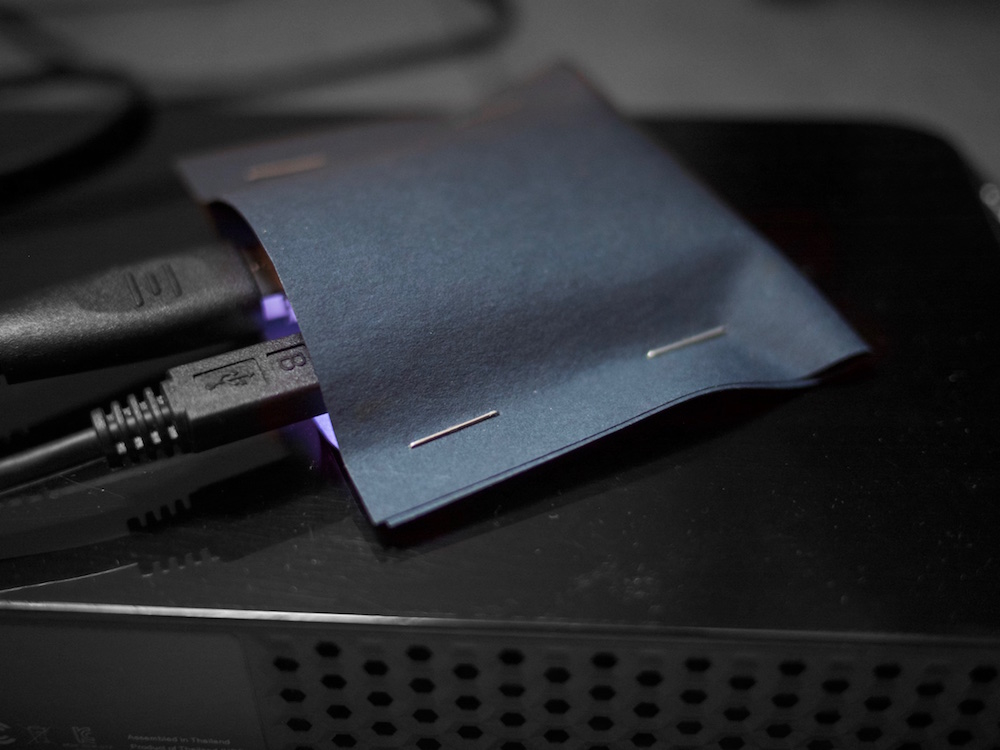Uses for fishpaper
This article first appeared on October 8, 2016.
Fishpaper is an insulative paper that used to be common in antique radios. It's often used to insulate transformers.
The history of the name is pretty interesting. According to Alvin G. Sydor:
In 1729 Stephen Gray made the discovery of the conducting and non-conducting power of different substances. Gray found that by using woven silk served as an excellent insulator. Some years later it was found that the paper industry could provide what was equivalent to woven silk. Later it was discovered that if the paper was saturated with fish oil its ability as an insulator was much improved particularly when used in harsh environments and high voltages.
Recently, I've been using it for fast and cheap electronics cases. This is one of my backup servers:
It's an NTC C.H.I.P. attached to a USB hard drive. My computers back up to it using Arq on the client side to connect via SFTP.
The backup system just sits in a corner where it never gets seen or bumped, so rather than fooling around with a case, I just stapled some fishpaper around it.
Fishpaper is also useful for insulating inside metal computer cases. I built a Zoneminder system recently, using an old PC and a Conexant 878A PCI card. The card didn't fit in my case, so I cut out a notch and wrapped the card in fishpaper:
I've also used it to mount circuit boards, when there isn't room for standoffs. Any time there's a chance of a circuit board coming into contact with anything else, I like to stick a sheet of fishpaper in between.


